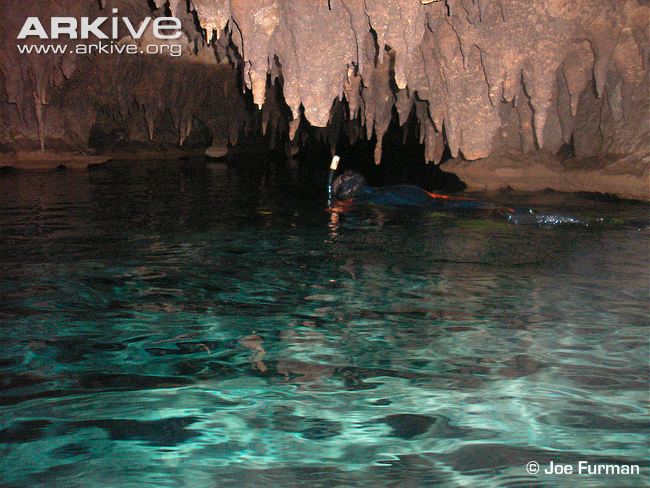Nutrition
Even though not much us known about the feeding habits of Comal blind salamanders, these fascinating creatures have an interesting way of acquiring their food and nutrition.
They mainly feed upon small
invertebrates that live in the aquatic environments with the
salamanders (Amphibiaweb). Adults mainly feed on blind
cave
shrimp and water fleas, while the younger salamanders eat
copepods (wesapiens). Researchers have found large quantities of
the substrate ebris in these salamanders stomachs which suggests
that they graze the substrate of which they
live. Other studies explain the
salamanders may eat bat guano due to remains that were
found in the salamanders’ fecal matter (amphibiaweb). Along with
leftover matter from bats, Comal blind salamanders also eat small
insects and insect larvae that also dwell in caves.
Adults mainly feed on blind
cave
shrimp and water fleas, while the younger salamanders eat
copepods (wesapiens). Researchers have found large quantities of
the substrate ebris in these salamanders stomachs which suggests
that they graze the substrate of which they
live. Other studies explain the
salamanders may eat bat guano due to remains that were
found in the salamanders’ fecal matter (amphibiaweb). Along with
leftover matter from bats, Comal blind salamanders also eat small
insects and insect larvae that also dwell in caves.
Eurycea tridentifera locate their food and prey through chemoreceptors (sensors that sense chemicals in environments) electroreceptors (organs that detect electrical fields) in their head and along the length of their body, and mechanoreceptors (receptors that reacts to pressure). This organism hunts by sensing water pressure waves created by their prey. To find their prey, the salamanders move their head side to side and use their receptors to locate other animals. When they attack their prey, their mouth opens quickly and takes in the prey. The prey is immediately killed by the salamanders several sharp teeth (Wesapiens).
Previous Page: Adaption
Next Page: Reproduction
Lost? Go Home